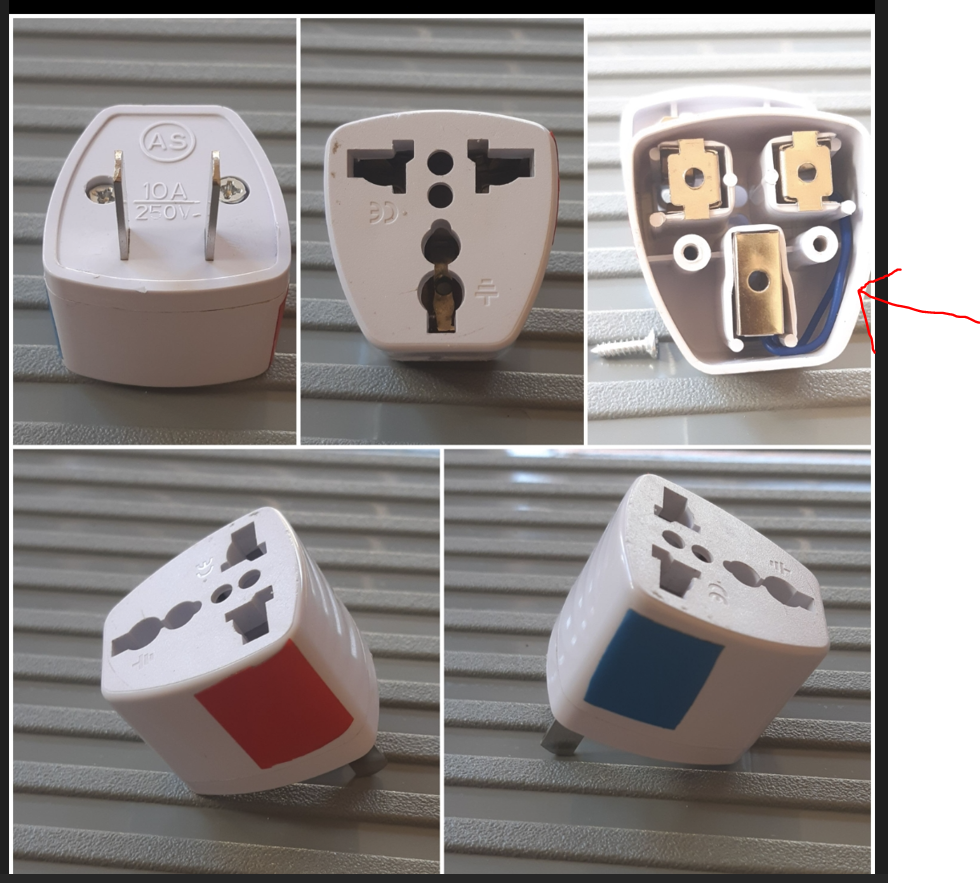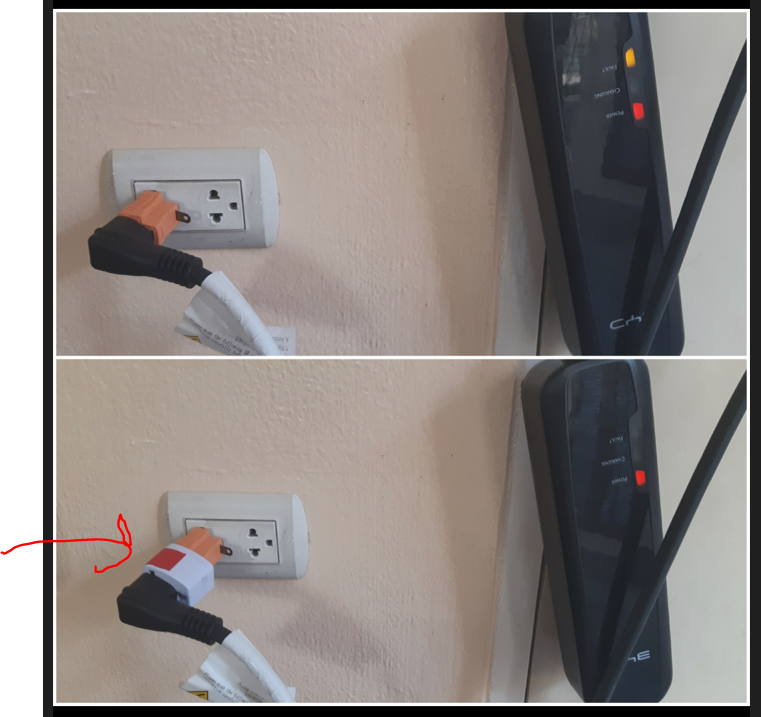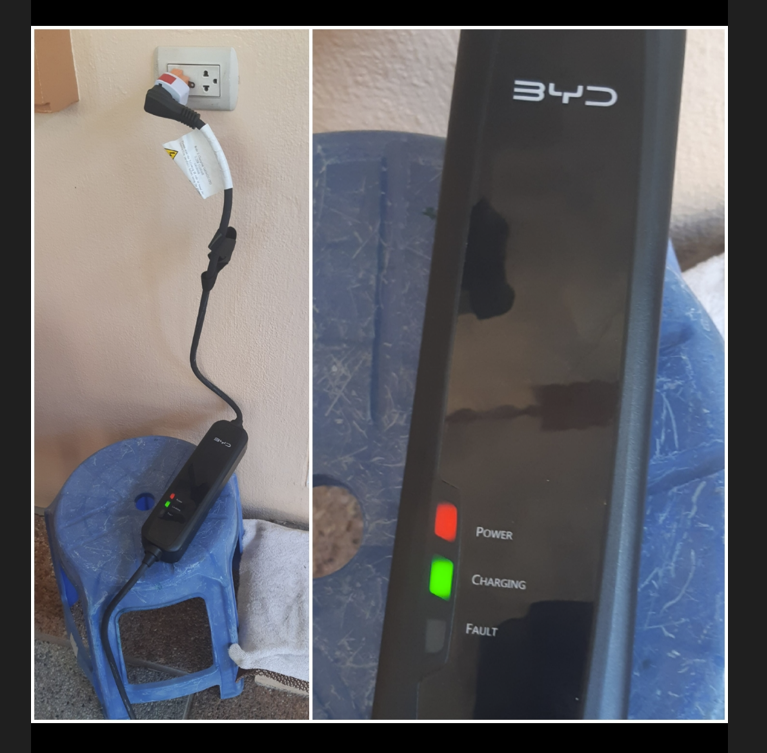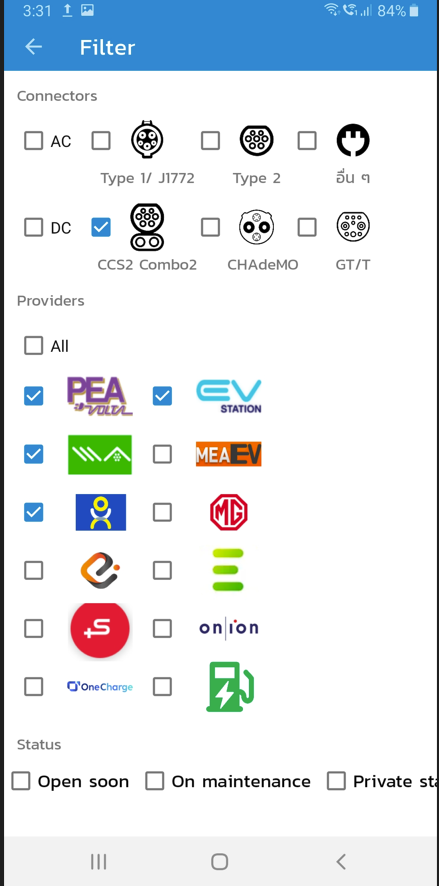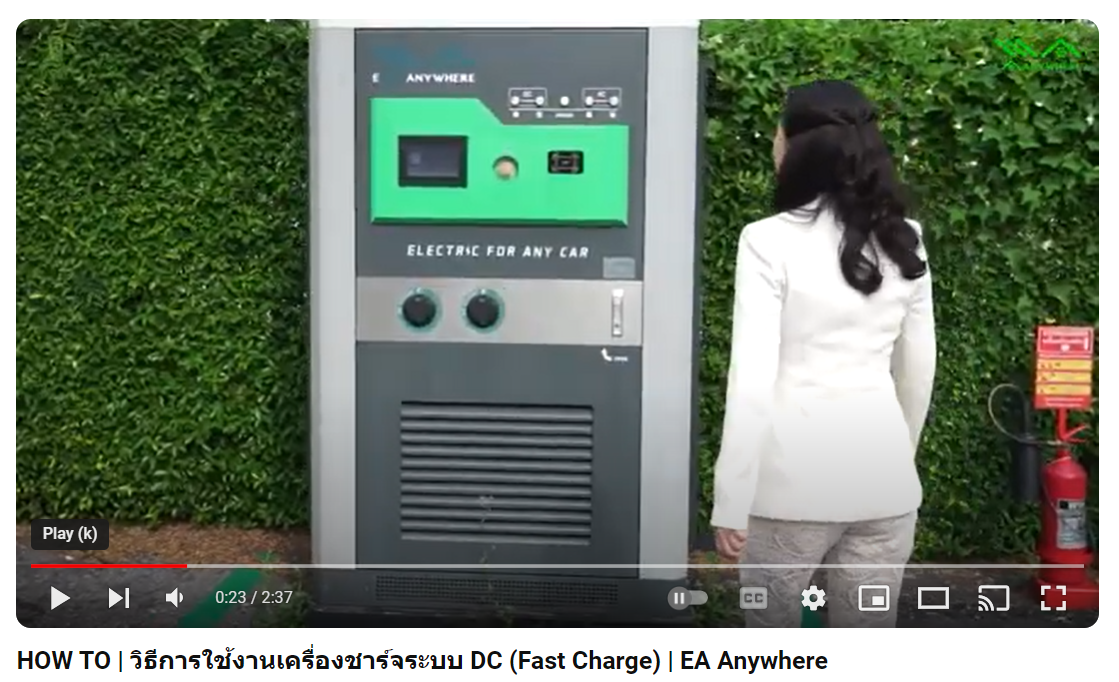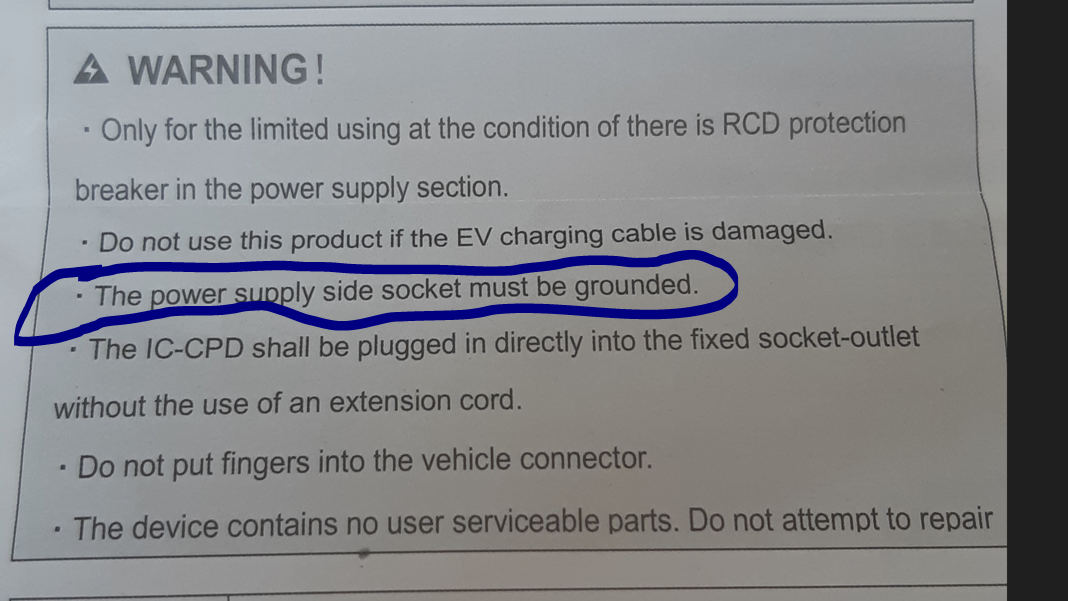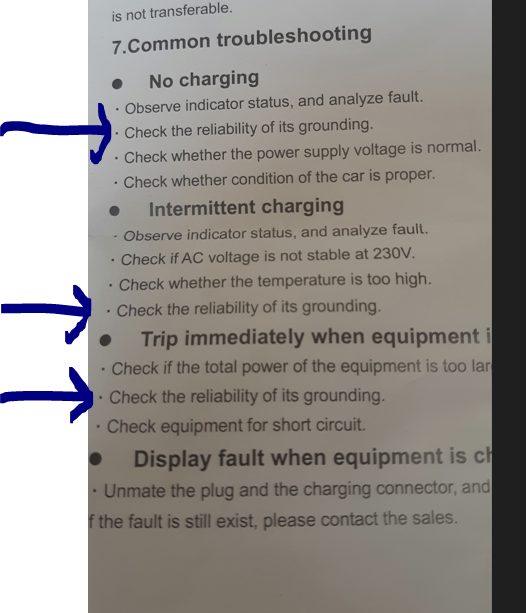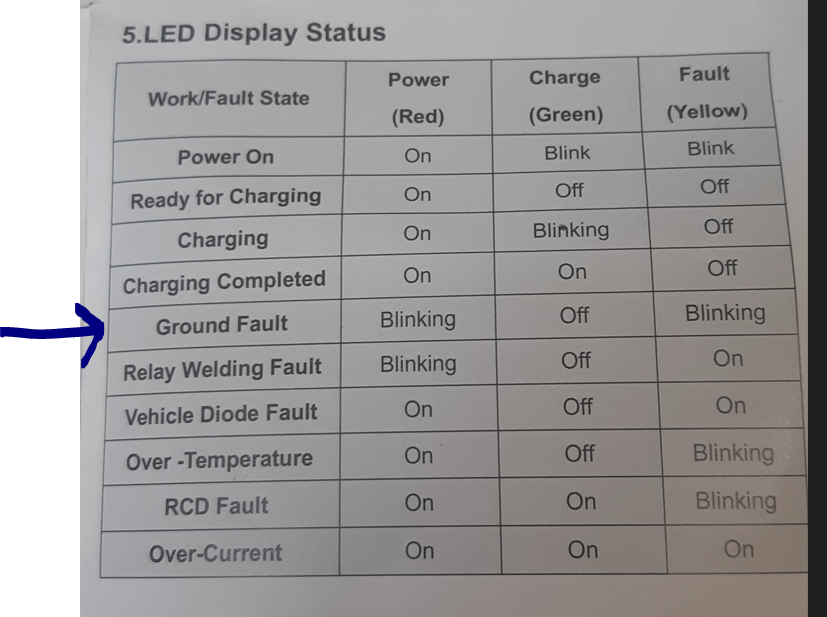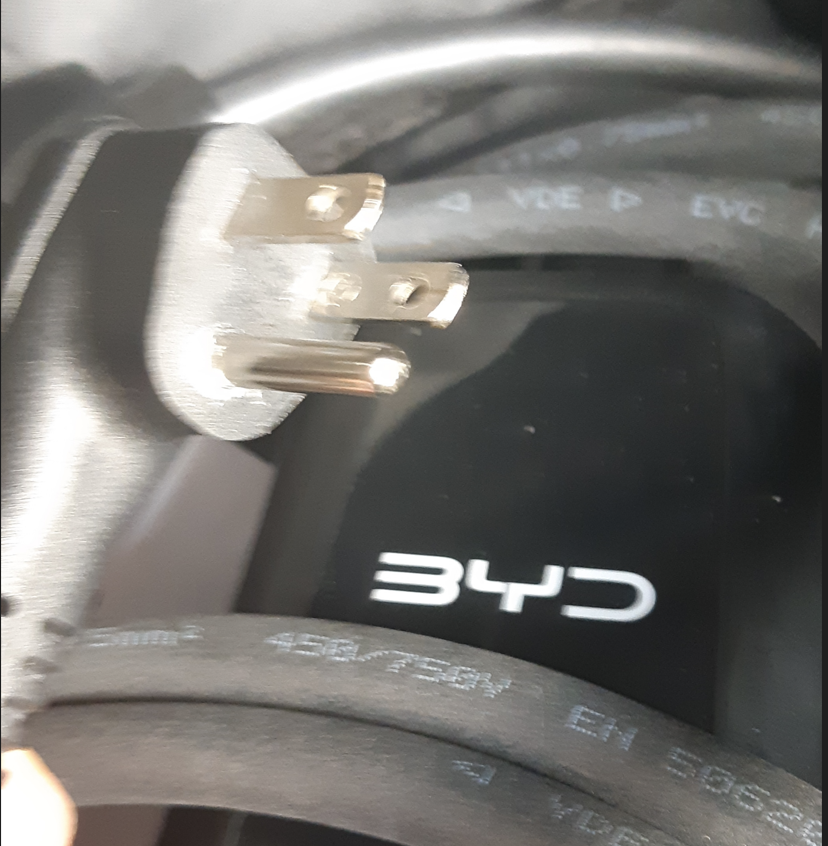-
Posts
29,077 -
Joined
-
Last visited
Content Type
Events
Forums
Downloads
Quizzes
Gallery
Blogs
Everything posted by Pib
-
U.S Social Security Payments Late?
Pib replied to Mitkof Island's topic in US & Canada Topics and Events
I expect your payment has "posted" to your US bank acct by now/6 Jan. The fact that your US bank shows "pending" o/a 2 or 3 Jan means the bank has received the ACH payment from SSA but the payment instructions say not to actually pay/post until XX date such as 3 Jan. And if your bank system only updates say once a day it might not move from pending to posted until 4 or 5 Jan U.S. date. Now some banks (the better banks) will actually post the payment a business day (or more) before the SSA posting instructions as the bank basically cash-flows your payment which effectively pays you a little early. But I expect your payment has posted by now since you stopped talking about it? -
Rate Charging Suppliers based on ease of use?
Pib replied to Greenside's topic in Thailand Motor Discussion
Some more crossfeed on Altervim. They have 100 locations across Thailand....99 of them at Lotus's stores and 1 at the CP Leadership Institute (CPLI) in Nakhon Ratchasima. CP owns Lotus's and the CPLI chargers are for internal use only. So, there are 99 locations available to the common man. Since a person can't see the locations until registering on the Altervim app I thought I would show the locations. The first pic below shows the locations during the hours Lotus's are open which is typically 8am to 9pm or 10pm....a few Lotus's are open 24 hours a day. Green drop-pins means the locations are open/chargers operational....gray drop-pins mean the locations are closed/inop. 2nd pic shows locations when a Lotus's is closed which is typically after 9pm or 10pm till 8am in the morning. 1st Snapshot during mid day....when the locations are open 8pm to 9pm/10pm 2nd Snapshot after 10pm at night....till 8am in the morning. The few green drop-pins are for the Lotus's that are open 24 hours a day. -
Yea...when I was doing 90 days report at BKK CW it only worked for me around 40% of the time. The other 60% were rejects with no reason given. I'm sure many immigration offices are less picky and more efficient/faster in online 90 day address reporting than BKK CW. BKK CW seems to go thru cycles of good and bad in regards to online 90 day reporting.
-
Yeap...a Nissan "e-power" vehicle is nothing more than a "mutated hybrid vehicle on steroids"....and Nissan goes to great length to try to convince it's not really a hybrid.
-
Update to above where I talked making a "pass-thru neutral-ground bounding adapter" to allow use of the BYD granny/portable charger on an electrical 2 wire outlet (no ground 3rd wire)....that is, an outlet with no ground...just a live/hot wire and a neutral wire which is still very common throughout Thailand. I made one yesterday....below are some pics showing it and showing it in use. And I caution once again not to make/use one unless you understand the ground-neutral bonding process and know how to determine which is the live/hot wire and which is the neutral wire on a 2 wire socket. From left to right like reading a document the first 2 pics in below collage shows a 220V electrical travel adapter which has two prongs for live and neutral on the input and the output side have three holes which accept a wide variety of plug types....it's just a typical travel adapter to help a person use the wife variety of plugs and sockets used around the world The 3rd pic show the adapter opened up....just requires the removal of two little screens to open it up ...and shows where I soldered a small jumper wire between the neutral prong and ground program. I actually twisted two very small wires together to make the a jumper wire size a little bigger for "physical" strength purpose; not for electrical current capability purposes as there is no to very, very small current/potential between a neutral and ground. Pics 4 and 5 show it reassembled and how I used a piece of red tape to mark the live/hot prong side and a piece of blue tape to mark the neutral side (now bonded to ground hole on the adapter). And this travel adapter actually comes new with "incorrectly" marked L (for Live/Hot/Line) and N (Neutral) prongs...so, I removed those incorrect markings and used my own markings of red and blue tape after making the adapter. IMPORTANT: As talked in my earlier post ITS EXTREMELY IMPORTANT you know which prong is going to be the live/hot side and which is going to be the neutral side...AND how you need to determine which is the live/hot and neutral holes on the socket you are gong to plug this special purposes adapter into. Remember where I talked using a voltage detector pen or voltmeter to determine which is the live/hot and neutral holes on the 2 hole/wire socket you are going to plug the adapter into. Below is a voltage detector pen which costs about Bt20 which you can use to determine which socket hole is the "live/hot" hole....the pen will glow a little glow a little (kinda hard to see in below daytime pic) when connected to a wire/socket hole with 220V on it. When touching it to a neutral or ground wire it will not glow. The pen I have does not require any little batteries to go bad, but you can buy types that come with little batteries which will make the pen glow brighter..and some battery-operated pens also have a little microchip in them to glow red for a 220V live wire and glow another color like blue on a neutral/ground wire. But as mentioned the ones that have batteries will surely not work when you need to use them once in a blue moon as the batteries will go flat/dead over time and maybe be flat/dead when you need to use them....one of Murphy's Laws. Yea, just get the cheapie type that don't use any batteries. And the other 2 pics show the orange ground buster I used for this test....a ground buster is nothing more than an adapter with two prongs on one side for the live/hot and neutral but no ground prong....and then on the output side it allows you to plug in a 3 prong plug consisting of a live/hot, neutral, and ground live, but the ground has been busted (removed) on the output side. Now lets show the "pass-thru bounded ground-neutral adapter" in action. 1st pic shows the BYD granny charger which has a 3 prong plug plugged into the ground buster to simulate a 2 hole socket (i.e., no ground) like maybe at an in-law house out in the province (or city)....just anywhere where the electrical sockets are only 2 wire sockets. Notice on the BYD granny charger you see the Red Power light lit since it's now plugged in but it also showing the Orange/Yellow fault light since it's not sensing any ground. The granny charger will not charge due to this earth/ground fault. HOWEVER, BUT in the 2nd picture after I have inserted the "pass-thru bonded neutral-ground adapter" the BYD granny charger now is no longer displaying the fault light....only the power light is on meaning it's ready for use...can plug it into your EV. And below pics show it actually plugged into my BYD Atto 3 charging. Charging light is lit-up and my Atto receiving charge And a pic in the Atto showing it charging at 1.7KW. If I had waited a minute or two before taking the picture the charge rate would have went up to around 2.2KWH based on my past usage as the BYD granny charger is a 10A/220v charger....10A times 220V give a KWH power of 2.2KWH. Since the "pass-thru bounded ground-neutral adapter" is a special use adapter AND a person needs to ensure it's plugged in a very specific way (i.e., live to live, neutral to neutral as cautioned before) I will carry the adapter in the car in a separate location from where I store the granny charger in the back. Only I will know where the adapter is hidden in the car for only my use since I know how to use it. Yeap....my BYD granny charger will now have to work in an emergency charging situation "even in 2 wire socket land" (which is many locations/socket outlets around Thailand). Plus I'm too cheaper to go spend thousands of baht on a 3rd party charger which is basically nothing more than a 2 wire, no ground charger. For info, educational purposes only....don't make/use a "bounded ground-neutral adapter" unless you fully understand the concept and the associated possible dangers if built/used incorrectly.
-
Oh days gone by when a lot of time spent on advertising a new model was geared towards the combustion engine/transmission/drive train. But with EVs the great, great, great majority of the time is spent talking about the interior, exterior, infotainment system, (i.e., the eye candy, comfort, techo icon pushing stuff) and maybe the traction battery size & range with very little mention of the specifics of the electric motor, drive train, etc. Of course other than mentioning in the written specs the motor horsepower/KW size (for those that want to know) there is not much to talk brag about with an electric motor...to most people about as interesting as talking about the electric motor in a floor fan. Yeap...oh how times have changed....how technology advances have changed the times.
-
The defective area shown in the picture above...is that paint or wrap?
-
I bet there is some "fine print" not reflected in above ad although when going to the source weblink below it just says the "*" means the vehicle needs to be reserved "and received" by 31 Jan 2024. https://autolifethailand.tv/official-price-jan-2024-byd-atto-3-ev-bev/ Around a month or two ago when the BYD Atto price was lowered by Bt100K it included fine print...fine print not included in the ad. When I went to my dealership to ask about the Bt100K reduction on the Atto it only applied to a limited number Atto's (32 at my dealership) AND only on the color white or grey which they had a excess off. If you wanted the Atto in red, blue or green then there was no price reduction and queue of a month or two. For the Seal Dynamic in the ad above I expect (guess) they have an excess amount right now and it wouldn't surprise me the reduction was only for a certain color(s)...maybe white only....but I'm just guessing. Yea...some of the advertised reductions don't include all the fine print...fine print you have to go to a dealership to find out about. But hey, a price reduction of any reason, for any model, for any color, etc., is a good thing for many folks if the model and color they want/like matches up with the fine print. And LOTS of competition right now among the electric vehicle manufacturers which usually drives lower prices...a good thing.
-
Rate Charging Suppliers based on ease of use?
Pib replied to Greenside's topic in Thailand Motor Discussion
Another Update: Last night I successfully registered with the Lotus's Altervim Charger app and which has 204 DC Fast Chargers around the country at "many" Lotus's Malls....see above snapshot in my previous post. I used my Bangkok Bank Mastercard debit card as a payment option. There was no verification of the card while loading it as a payment option....by verification I mean like debiting a small amount from my acct, getting a OTP code to verify the online charge, etc....the app just accepted it. OK, today I do a real world test at my nearby Lotus's Mall here in Bangkok. Using the DC Fast Charger and App is VERY EASY....the easiest of the various charging apps and chargers I'm registered with/have used. When starting the DC Fast Charger charging session you have to enter "X-amount of minutes" you want to use the charger" and the minimum amount you can select is 10 minutes. Since I just wanted to do a test to ensure the charger and my BYD Atto would get along AND my payment option really worked, I only entered 10 minutes. After entering this info the app continued by automatically charging my debit card a Bt100 fee....I thought OK as a 10 minute charge would probably cost me around Bt78 and hopefully I will get refunded around Bt22 after the charging completes in 10 minutes. At exactly 10 minutes the charging stopped....a charge of little over Bt78 was automatically sent to my bank and it appeared to be successful based on the SMS I got from Bangkok Bank. And when I looked at my Bangkok Bank acct there was no Bt100 charge but that little over Bt78 charge. Things are still looking like a successful test. BUT then I look in the Altervim app History section and it shows the transaction/payment failed and was asking me to Pay again...it even had a little Pay icon in the History area next to the failed payment transaction. So, I hit that Pay icon and once again it charged a little over Bt78 to my Bangkok Bank acct and the History section said it was a successful payment this time. But now my Bangkok Bank acct shows two charges for Bt78 like I had been double charged....that first charge had not fallen off (or at least not yet). I contacted Altervim Customer Service via their LINE address (no phone number to call...only a LINE acct or an email address). Over the last hours my LINE chat session has went back and forth regarding the apparent double charge although they sent me a copy of one of their docs saying the 1st payment failed on their end so they didn't get paid. However, as mentioned, two Bt78 charges are still showing in my Bangkok Bank acct. Altervim wants me to check with my bank regarding the first charge....see if the bank system shows it as a failed charge that will fail off my acct in the coming days/weeks, etc. I did have a similar issue with the Elexa by Egat app when registering/loading a payment option with them where they said a payment had been refunded same day but it did not appear as a credit on my bank acct until around 18 days later. Summary: hopefully this double charge issue will automatically clear up over the coming weeks. But as mentioned Altervim registration was easy....no ID card/passport of any kind required. My Thai bank debit card was accepted as payment option in the app. And actual use of the Altervim DC Fast Charger is VERY EASY. So, I now have many more DC Fast Chargers around the country available for my "infrequent" use....just when I do a l...o....n....g trip from home that will require me to charge up in order to get back home. I now have access to 5 charger apps (with payment options loaded) offered by PTT EV Station Pluz, PEA Volta, Elexa by Egat, EA Anywhere, and now Altervim....totals up 3,293 Fast Chargers around Thailand (93%) out of a total of 3,540 Fast Chargers in Thailand right now. I have done real world tests on all 5 apps. And although I'm also registered with ReverSharger which has 103 DC Fast Chargers mostly at BYD Dealerships that app will not accept my Bangkok Bank Mastercard debit card...nor does it accept the bank UnionPay debit card....I "may" attempt to see if it will accept one of my US credit cards or my Krungsri debit card, but since it seems the great, great majority all of the ReverSharger DC Fast chargers are in the greater Bangkok area where I live I really don't need to sign up with them as the location where I would need to use a charger is "far away from Bangkok" during any long trips from my Bangkok home. Yea....I think I'm pretty well covered by the 5 apps/chargers (PTT EV Station Pluz, PEA Volta, Elexa by Egat, EA Anywhere, and Altervim) I have successfully registered with, loaded a payment option, and done real world charging tests. -
Question regarding adding a new mobile device...or maybe I should say activating Bangkok Bank mbanking on a new phone...I going to upgrade to a new phone over next few months. In the Bangkok Bank mbanking app there is a menu/setting that shows the mobile device you currently have activated to work with the banking and there is a Delete button allowing you to delete that device. Here's my question: to activate the Bangkok Bank mbanking app on your new phone must I first go into my old phone and delete it in the menu OR by activating the mbanking on the new phone that process will automatically delete the old phone. In your response above it implies it's an automatic process but I'm not sure. Thanks.
-
Do you know the exact "net" amount (i.e.., after all deductions, taxes, etc) which SSA sends you? That's the first thing you need to be sure of....it you starting point before further calculations can be made. Say you think you are getting $1600.50 net but actually it's 1590.50, well, you are starting off with an error already making you think some other fees are being charged somewhere. And what specific exchange rate reference/source are you using? You using some interbank rate, a Wise rate, a Bangkok Bank rate, etc? You just can't pick any rate....you need to know which specific rate is used for the method you are using to receive the pension. And yes, over the last few months you probably have been receiving slightly less and less each month simply because the USD/THB exchange rate has been slowly going down (i.e., getting worst).
-
DCC relates to "credit/debit card" exchange rates where a local bank offers you their exchange rate (typically 3 to 6% lower than the Visa/Mastercard rate). Does not apply to transfers like direct deposit which are being paid via a funds transfer system like SWIFT, ACH, a Wise peer-to-peer system, etc.
-
@PumpkinEater From you opening post I think you signed up for the International Direct Deposit (IDD) method since you mentioned Citi Bank in the USA where you think your monthly direct deposit started from. With IDD you can have the funds directed deposited to "any" Thai bank and even to a joint account. The funds are transferred via the SWIFT system with the very final leg of that transfer occurring via the Thai BAHTNET system which interfaces with the SWIFT system. The only fee along the way is a Bt100 BAHTNET receiving fee on your Thai bank end. The other possible Direct Deposit method is using a Bangkok Bank special/restricted acct for U.S. govt reoccurring payments like SSA govt pension payments. Only Bangkok Bank has this ACH receiving capability; no other Thai bank has it. The U.S. Automated Clearing House (ACH) transfer system is used for this transfer; SWIFT is not used. The payment goes to the Bangkok Bank New York Branch who relays it to Bangkok Bank in Thailand. Fees are applied at the NY branch and your in-Thailand Bangkok Bank branch and these two fees do "not" appear, repeat, do not appear anywhere on your acct statement, passbook, etc., because they are applied/deducted "before" the funds are posted to you Bangkok Bank acct. This fools a lot of people in thinking no fees were applied along the way but fees were indeed applied by Bangkok Bank. The two fees are typically $5 or $10 depending on the size of the payments as it flow thru the Bangkok Bank NY branch...and then another fee of 0.25% (Bt200 min, Bt500 max) on the in-Thailand Bangkok Bank end. The exchange rate used is the Bangkok Bank "TT Buying Rate"...usually their "opening day/8:30am rate" as the exchange often changes several times during the day. The payment will be coded at "FTT" (International Transfer) on your Bangkok Bank acct. Assuming you are using the IDD method the exchange rate is determined by the U.S. Treasury/it's IDD contractor bank (Citibank Global right now) several business days before the actual payment. It is not determined by your receiving Thai bank....it's determined several business days before on the US end as the US Treasury/its IDD contractor converts dollars to baht in order to have baht to make your IDD payment on the 3rd of each month. That is, THB is transmitted from the US to your Thai bank acct; "not" USD which are then exchanged on the Thai bank end like if using the ACH method. Now if using the ACH system talked in the previous paragraph the US Treasury sends USD and Bangkok Bank exchanges it using their TT Buying Rate while applying some "hidden" fees. Additionally, payment via IDD are codes as BAHTNET which typically uses a BTN code on your Thai bank statement and they are not coded as an International Transfer since the BAHTNET system is primarily a domestic transfer system. Regardless of whether you are using the IDD or ACH direct deposit methods it's important you are sure of the "net amount" the SSA sends you....net amount being the amount after taxes, Medicare, whatever deduction is applied. Over the years I read many posts where people are now sure of the exact net amount sent which complicates in trying to figure out how fees (known and hidden), exchange rates, etc., affected their direct deposit payment. See below post I made on this subject in May 2023...it gives some more details on IDD and ACH direct deposit methods. And also at the bottom see a 12 month cost comparison from several years ago between ACH and IDD which takes in acct exchange rates and fee used by the two methods. From a "most baht deposited into your Thai bank acct" standpoint if your net SSA payment is above approx $1,125 you get a few more baht using the ACH method but you'll also have to put up with the Bangkok Bank special/restricted acct rules. If you net payment is below approx $1,125 then you'' be better off using the IDD method plus you can have the payment sent to "any" Thai bank THB acct (can not be sent to a USD acct) with zero restrictions. IDD and ACH Comparison over a 12 month period
- 109 replies
-
- 12
-

-

-

-
LTR and 90-day Reports
Pib replied to HerewardtheWake's topic in Thai Visas, Residency, and Work Permits
Yes...just like for 90 day reporting under a typical non-immigrant visa if you exit Thailand before the 90 day report is due then no report is due until 90 days after you reenter Thailand. An exit/reentry resets the 90 day reporting clock. Or said "for a LTR visa which requires 365 day address reporting vs 90 days," if you exit Thailand before the 365 day report is due then no report is due until 365 days after you reentered Thailand. An exit/reentry resets the 365 day address reporting clock. So, since you exited/reenter Thailand in XX Dec 2023 then an LTR 365 day address report is not due/required until XX Dec 2024. And if you exit/reenter Thailand before XX Dec 2024 then you have just reset the clock again. For a LTR visa person who exits/reenters Thailand at least once a year they would never have to do an address report. But if you stay longer than 365 days then you do need to do a report at your local immigration office who supposedly now have a clue about LTR visas and how to handle a 365 day address report. Supposedly no longer a requirement that you must do the address report only at the BoI Bangkok Chamchuri Sq Immigration Office in person or designated representative to go in your place. -
Thanks for info on the Charge Loma app ....I like how I can select/filter only the 4 charging apps/stations I'm registered for here in Thailand and also select/filter for only CCS2 connectors.
-
Regarding how to use an EA Anywhere DC Fast Charger I have used them twice. And if it was not due to a helpful Mall Security Guard who noticed I seemed confused about using the charging station I would have probably still to this day not have used one. Let me explain. A month or so ago after I had successfully signed up for the EA Anywhere app and also successfully loaded a payment option, I still needed to do a real world test to see if I could get an EA DC fast charger to work with my BYD Atto, being being able to pay for the charging session, etc. There were a couple of EA DC Fast chargers at a nearby mall where I live in western Bangkok. I drive to the chargers (just like the one in the pic below) and start thinking this particular type of charger a person has to bring his own charging cable and plug into one of the two 7-22KWH connectors on the front of the station identified as connectors C and D on the charger display screen...the black round things in the pic below. In some countries/locations there are charging stations where you must bring along your own charging cable to plug into the charger...I guess this is due to theft of charging station cables and/or people buy/need a longer than normal cable to use with their EV. However, no sign of any CCS2 High Power DC Fast Charge connectors/cables....and the EA Anywhere app and other charging station info apps said these stations had DC Fast Charge 90KWH charging capability. I was getting ready to leave when a mall security guard had noticed I was perplexed about use of the charger, no DC Fast Charger cables, etc (probably because he had seen other folks wondering why no DC cables) and he pointed out that the DC cables are located in closed & locked cabinets on each side of charger....and not until you get past the first few steps in the charging app that the appropriate door (Door A on left side or Door B on right side) would pop-open/unlock automatically which then allows you to fully open the cabinet door and get the DC charging cable to plug into your EV...DC Fast Charging cable that is already integrated/hooked into the station. And let me tell you these DC charging cables in the EA DC Fast charging station are the thickness of your arm....must more heavy duty/thicker than the DC cables say you see on a PTT EV Station Pluz DC fast charger, PEA charger, etc. Anyway, after dragging the heavy, thick cable out and plugging it into my EV and doing some more steps on the EA app the station started to charge my BYD Atto. And it started charging at 86KWH rate....the Atto is able to DC charge at a maximum of 88KWH and this is the first time any charger had been able to approach that 88KWH. The most I had got before on other chargers like PTT, PEA, Elexa DC Fast Chargers was around 55KWH and the charge on my battery had been at the same lower level around 40%. Yeap, the EA Fast Charger was just able to pump out a higher power/amp level than all other chargers I had used. I only charged about 5 minutes for this test and it all went fine. Now at the very end of charging session after you have disconnected the charging cable, hung it back in the cabinet and closed the cabinet door (which locks it again) you still need to scan the station QR code "again" to "Close" the session/finalize the billings. Normally just pressing the Stop Charging icon on a charging app closes/finalizes the whole process but with the EA charger below you do need to scan the QR code again. Below the picture is a short 4 minute Youtube video that shows use of the EA DC Fast Charger, the cabinet doors automatically popping open, the lady dragging out and putting back in the healthy charging cable, etc. There are only a few seconds where they show the lady handling the cable because I expect they didn't want to show how the "heavy duty/thick" cable" takes some real effort to move around. I also used an identical EA DC Fast Charger about a week later and it went just like my first use. So, I'm now a real pro now with two uses under my belt of a EA DC Faster charger like below....and after dragging out the very heavy duty DC cables I've decided to do more gym work to build up my arm muscles more as lifting the cable takes more effort than other typical DC Fast Chargers like PTT, PEA, Elexa fast chargers. Cheers.
-
In some posts over the last few days we talked the issue of some (probably most) EV granny chargers requiring a ground connection otherwise the granny charger will show a fault...and it's an earthing/grounding fault. Both your and my BYD-provided granny chargers fault if hooked up to a two prong outlet (i.e., live and neutral with no ground) as the BYD granny charger needs a ground in addition to live and neutral. After thinking about it for a while I thought bonding the neutral and ground wires in an adapted socket/plug should fix the problem...call it a "neutral to ground adapter/plug," HOWEVER, it can also be dangerous unless a person knows what they are doing. The RV community use neutral-ground adapters sometimes to use with generators...plenty of info on youtube/the internet about this. HOWEVER, BUT, the adapter needed to make the BYD granny charger uses the same concept but is wired-up a little differently. Dangerous because if the neutral-ground adapter is plugged into a socket which is not wired correctly a person could end-up shorting the hot/live wire carrying 220V to the ground hole on your adapter...this means 220V is now on the adapter ground connector also and when you then plug-in the BYD charger you are applying 220V to its grounding circuiting also. That could make part of the charger's outer shell electrified...but since the BYD outer shell is plastic that would offer some protection. And lord knows what it might do to the charger's circuitry (maybe nothing, maybe smoke, etc) and if already hooked to the EV maybe problems for the EV. . You just don't know if an outlet socket will be wired correctly....that is the hot/live wire going to the designated hot/wire hole on the socket...maybe the hot and neutral wires are reversed on that socket.....lord knows here in Thailand MANY sockets are not wired in accordance with electrical regulations. So, a person needs to confirm which is the hot/live hole on the socket and which is the neutral hole. A person would need to use a voltage detector pen (cost a 10 to 30 baht on Lazada) or voltmeter to first determine which is the live/hot hole and which is the neutral hole on the socket. EXTREMELY IMPORTANT to know which is the hot/live hole and which is the neutral hole. Once that has been confirmed a person could plug in their pass-thru neutral-ground bonding adapter ensuring the adapter's neutral prong goes to the neutral socket hole and the live/hot prong to the live/hot socket hole. Anyway, today I jerry-rigged a temporary test neutral-ground bonded adapter which allows power to pass thru it---different from the neutral-ground adapter used in the RV community on generators as it's not a pass-thru adapter. I used my ground-buster plug (i.e., with a short piece of wire to connect the neutral and ground connectors together). I then confirmed on the socket I was going to plug it into as to which socket hole was live/hot and which was neutral. I then plugged in my jerry-rigged adapter and then plugged my BYD granny charger into the adapter. Got no fault on the granny charger...just the green light saying it ready to charge.. I then plugged the charger's EV charging cable into my BYD Atto and charging began as normal. Yeap, the BYD granny charger was now happy as it was seeing a ground. So, now I'm going to make a permanent adapter for use in 2 wire land in case of an emergency. And as mentioned earlier it critically important you know which is the hot/live hole and neutral hole on a socket you will find in 2 wire land---I will use a cheaper voltage detector pen for that...you now, the kind that glows when touching a live/hot wire. I'll use a pen that does not require the little batteries which can go bad/flat....I already have such a pen I used today in my test....but I'll still get another one just to keep with the charger if I ever need to use it the land of 2 wires (like the homes of most of my in-laws in the provinces) along with the pass-thru neutral-ground adapter I will make. Now I don't have a need to buy another EV granny charger for thousands of baht which doesn't require a ground to work like several folks talked about having. I can just use my BYD granny charger that came free with my BYD Atto. This is info only....don't attempt this unless you understand the neutral-ground bonding concept and comfortable working with electrical circuits like 220V circuits.
-
Probably no risk to the car; but possible risk to you as a protective ground is meant to protect living things from getting shocked/electrocuted if a live circuit/wire comes in contact with the chassis of equipment which that a person could come in contact with. Like touching the metal chassis of a refrigerator, washer, dryer, etc., which could become electrified if a live circuit/wire somehow came in contact with the chassis.
-
Some snapshots from the BYD granny charger instructions talking the importance of having a ground...not just from a safety prospective but as Andrew Dwyer pointed out his BYD granny charger will not work (i.e., faults) on a two wire outlet (ie., no ground). And I confirmed by putting a ground buster on my 3 wire grounded outlet (one wire is ground) and the BYD granny charger would fault...but plug-in the granny charger without the ground buster to where the charger sees a ground and it works fine. Heck, I used the 10A granny charger for almost a month at home when I first got my Atto...plugged into my grounded three prong 16A outlet while waiting for installation of the 7KWH wall charger. The granny charger never faulted...worked like a charm. But with no ground it will not work as it just designed to where a protective ground is required to allow it to work. Glad I saw Andrew's post as I now know by me carrying the granny charger around in my car for emergency charging purposes would be a waste of time anywhere that unground outlets are used....like at the homes of most of my in-laws out in the provinces and just many other places in Thailand. Gotta have a grounded 3 prong outlet for the BYD granny charger to work.
-
The BYD granny charger I have is a 3 prong connector (see pic)...with a built-in/molded ground prong that can't be removed (or reinstalled). It's different from the style of connector where a ground prong can be inserted/screwed in (or removed) like in the Lazada ad. And the BYD granny charger manual states it must have a ground connection....and they are saying that not so much from the typical safety prospective like most equipment manuals note but it points out no ground/intermittent ground will result in charger fault(s)/no charging. The BYD granny charger "just gotta have a ground" to work....no good in the land of two wire connections....and many Thailand locations/buildings/electrical outlets are still just two wire (Line and Neutral) although the outlet may be a 3 hole outlet but there is no grounding wire actually connected.
-
Does your "similar" one have a 3 prong or 2 prong plug?
-
OK...thanks. It's just the Lazada ad did not specifically say anywhere (that I saw) it would work on an ungrounded outlet....like a two hole outlet. And as mentioned earlier the ad picture shows it with a 3 wire connector (i.e., with ground) where the ground connection is made when plugged into a socket specifically made for this type of plug where the ground connection is made by the connector on the side of the plug or by using a prong that is inserted/screwed into the ground connection hole....I identify those two ground locations by with the two arrows below. I also pulled on my BYD granny charger again to see if the fault would go away when plugged into the car....and it didn't. And then I read the little manual that came with the granny charger and it specifically says a ground is needed. I've been carrying that BYD granny charger in my Atto as an emergency piece of equipment to charge up a little but now realize I would need a three hole/grounded socket "with an actual ground wire hooked to that socket) in order to use the BYD granny charger. And a lot of places a person may go may be to the land of 2 hole/wire outlets or outlets with 3 holes but no ground wire actually hooked up to the outlet.
-
I didn't see in the Lazada ad that says it will work (not fault) when used on a two wire outlet (I.e., an outlet with no protective ground).
-
Sure enough. I used a ground buster (I.e., 3 to 2 prong adapter...removes the ground) to plug in my BYD granny charger and got a fault on the charger without it even being connected to the EV. Remove the ground buster and plug directly into my 3 hole house socket (I now have a ground) and no fault. And in my inlaws world in the provinces they mostly have 2 wire ungrounded sockets. Got a link for your Lazada buy? Thanks.





